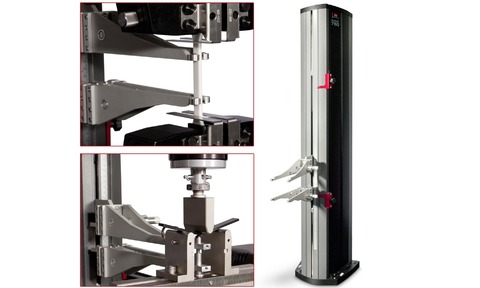
The AutoX 750 Automatic Contacting Extensometer claims to support faster, more reliable materials testing.
Claiming accuracy to /-1 µm, a maximum travel of 750 mm and multiple knife edge options, the AutoX 750 is designed for tensile, flexure and compression testing of various materials including highly rigid composites, metals, and plastics.
By removing tedious and time-consuming manual steps, Instron said that lab operators can enjoy a simplified testing routine while improving throughput.
Reducing inconsistencies in how a traditional clip-on extensometer is attached greatly improves the repeatability and reproducibility of critical test results.
The AutoX 750 meets the strain measurement specifications of ASTM E83, ISO 9513, and ISO 527-1 (2011). It is fully compatible with closed loop strain control and complies with ISO 6892-1 Method A and ASTM E8.
Instron’s Bluehill 3 software package is used to record and store the data supplied by the extensometer and determine a variety of calculations including modulus, offset yield, and plastic (non-proportional) elongation to failure.
The AutoX can be used with both fully-automated or manual testing systems, such as Instron’s 3300, 5500, and 5900 electromechanical dual column systems, and LX, DX, HDX, and KPX static hydraulic testing systems.
The AutoX can stay attached to the specimen through failure and, when not in use, the mounting allows operators to quickly and safely position the extensometer out of the test area for safe storage environment.
Removing the AutoX from the test area also allows operators to easily switch out grips and fixtures without the additional step of uninstalling the device. Tailor-made setups boost benefits for testing composite laminates.
Product features:
- Automatic gauge length positioning.
- Automatic attachment to the test specimen with adjustable contact force,
Patent-pending features:
- Simultaneous opening and closing of both arms via a rotating common bar with just one motor, making the arms lighter.
- A debris shield to protect the extensometer from damage due to the ingress of dirt/debris.
- An ergonomic tensioner to adjust the gripping force of the measurement arms.

